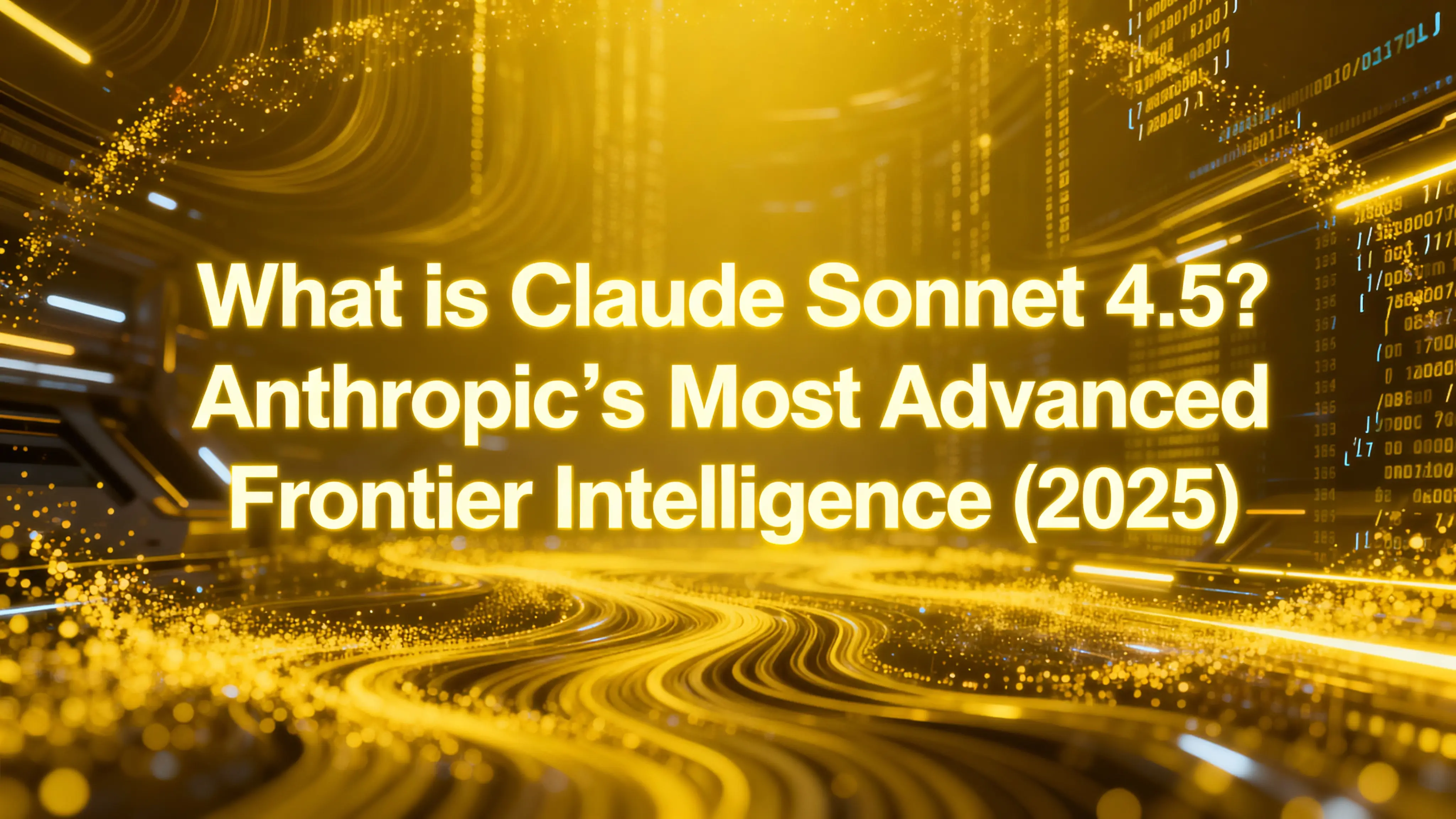What is Claude Sonnet 4.5? Anthropic’s Most Advanced Frontier Intelligence (2025)
Learn what is Claude Sonnet 4.5 — Anthropic’s cutting-edge AI model built for reasoning, coding, and autonomous action. Discover its benchmarks, safety upgrades, and how to try Claude Sonnet 4.5 for free via MixHub AI.

If you’ve been tracking the evolution of Anthropic’s Claude family, you’ve likely seen a surge of interest around one question: what is Claude Sonnet 4.5 and why is it shaking up the AI landscape?
The release of Claude Sonnet 4.5 marks one of the boldest leaps in frontier model design — not just for conversation, but for real reasoning, coding, and autonomous action. Anthropic defines this generation as the most capable and aligned Claude model ever built, and after exploring its core systems, it’s clear that this isn’t just an upgrade — it’s a new stage in AI maturity.
💡 Understanding What Is Claude Sonnet 4.5
To understand what is Claude Sonnet 4.5, picture an AI that can both reason and act. This model is designed around two intertwined goals: long-horizon reasoning and real-world execution. That means Claude Sonnet 4.5 doesn’t just generate answers — it plans, evaluates outcomes, and iteratively improves.
According to Anthropic, Claude Sonnet 4.5 surpasses previous benchmarks across coding, planning, and self-correction. On the OSWorld computer-use benchmark, it achieved roughly 61.4% accuracy — up from 42.2% in Claude Sonnet 4. That’s a 45% improvement in multi-step tool use and reasoning.
If you want to experience this innovation directly, try Claude Sonnet 4.5 for free here on MixHub AI — you’ll get hands-on access to Anthropic’s most capable reasoning model yet.

⚙️ Why Claude Sonnet 4.5 Matters for Developers and Agents
Part of understanding what is Claude Sonnet 4.5 means grasping how it’s positioned: it’s built as a platform model, not just a chat engine. Anthropic has paired it with checkpoints, memory persistence, and an Agent SDK — tools that empower developers to deploy autonomous, safety-aligned AI systems.
🧠 Elite Coding and Problem Solving
Claude Sonnet 4.5 is built for engineering precision. On SWE-bench Verified — a real-world coding benchmark — it outperforms all prior Claude versions. It maintains coherence over 30+ hours of continuous coding or reasoning, allowing it to handle massive debugging sessions or cross-project refactors without losing context.
This means you can trust Claude Sonnet 4.5 to not just respond with code, but to understand the architecture behind it.
Developers can test this live through MixHub’s hosted environment — launch Claude Sonnet 4.5 now — to build and validate code workflows interactively.
🧩 How Claude Sonnet 4.5 Reinvents Context Control
One of the biggest challenges for AI agents is context loss — forgetting earlier information during long tasks. That’s where Claude Sonnet 4.5 introduces context editing and memory tools. Agents can now recall previous discussions, prune outdated logic, and dynamically manage context length.
So if you train or coordinate multi-agent workflows, Claude Sonnet 4.5 enables sustained reasoning across multiple steps without drifting. It’s capable of maintaining conversation integrity for hours (or even days) — a crucial foundation for real automation.
🔐 Safer, Smarter, and More Transparent
When asking what is Claude Sonnet 4.5, safety is not just a footnote — it’s a design pillar. Anthropic released the model under AI Safety Level 3 (ASL-3), which integrates real-time classifier filters to prevent undesirable behavior.
Claude Sonnet 4.5’s improvements include:
- Defenses against prompt injection
- Reduced sycophancy and deception
- Fewer “hallucination loops”
- Optional fallback to Claude 4 for flagged prompts
This makes Claude Sonnet 4.5 particularly strong for regulated or enterprise deployments, where compliance and control matter as much as creativity.
🌐 What Makes Claude Sonnet 4.5 Agent-Ready
The agentification of Claude is now official. Claude Sonnet 4.5 integrates native execution abilities — meaning it can write files, execute scripts, generate documents, or draft slides directly through APIs.
It’s also extensible via:
- Claude for Chrome, which lets the model act inside a browser to navigate pages or fill forms.
- Visual Studio Code integration, connecting directly with CLI-based development workflows.
- Agent SDK, offering checkpoint rollback and error testing for safer long-running coding chains.
Anthropic built this infrastructure because future AI agents won’t just “chat” — they’ll build, schedule, and operate autonomously. And Claude Sonnet 4.5 is the first Claude that’s truly ready for that shift.
🚀 Early Ecosystem Adoption
Langbase has already announced early Claude Sonnet 4.5 integration, letting developers instantly upgrade existing Claude 4 apps without rewriting code. This compatibility is a sign of Anthropic’s growing stability and its ambition to make Claude part of real-world product pipelines.
If your stack already uses Langbase or MixHub AI, onboarding Claude Sonnet 4.5 is practically plug-and-play — a few lines of config, and you can start running next-gen reasoning and code execution.
👉 Ready to try? Visit Claude Sonnet 4.5 on MixHub AI and see how its multimodal reasoning handles your real projects — from research to full app development.
🏁 Final Thoughts — What Is Claude Sonnet 4.5 Really About?
Ultimately, what is Claude Sonnet 4.5?
It’s a demonstration that advanced AI isn’t just about talking smarter — it’s about thinking deeper and acting responsibly.
Claude Sonnet 4.5 balances creative autonomy with strict ethical alignment. It codes, reasons, recalls, and executes — all while holding itself accountable.
If the Claude series is Anthropic’s poetry of intelligence, then Sonnet 4.5 is its masterpiece verse — the one where thought finally becomes action.
🧭 Begin exploring your own projects with Claude Sonnet 4.5 here and experience the frontier of intelligent reasoning in 2025.
